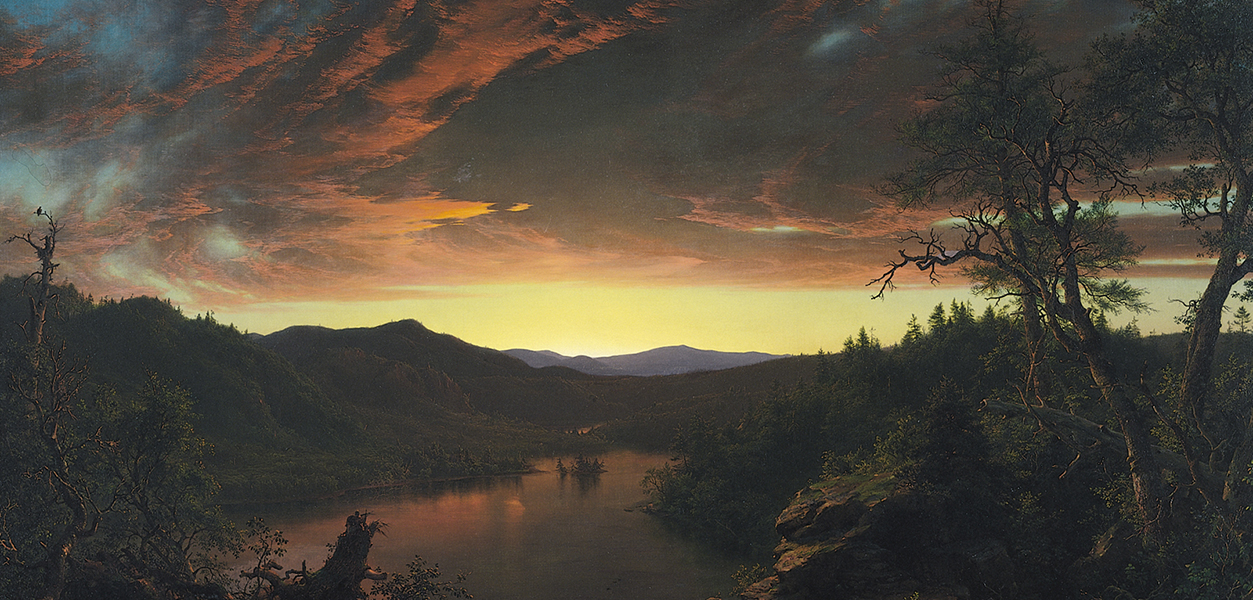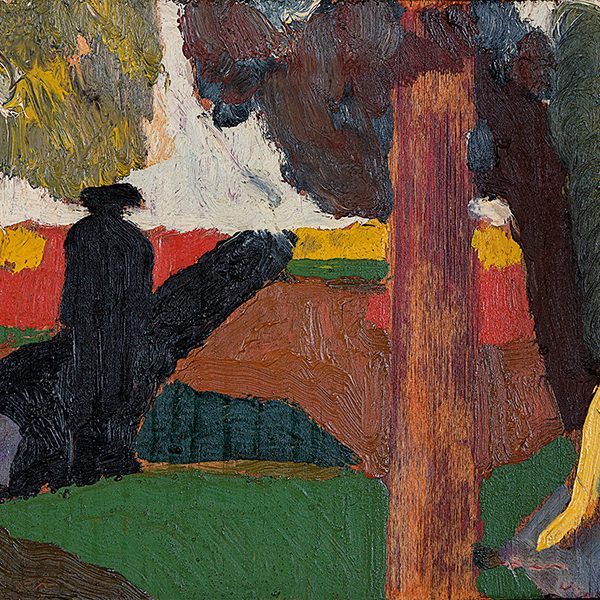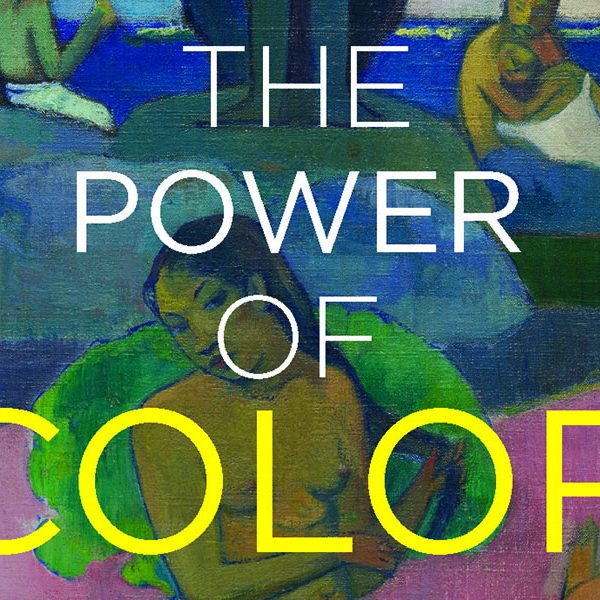Art + Science: Jennifer Raab on Frederic Church
Jennifer Raab —
Years ago, standing in front of Frederic Edwin Church’s The Heart of the Andes (1859) at The Metropolitan Museum of Art, I wondered, why is this painting so detailed? This was the first word that came to mind when looking at the picture. It was also the term—as adjective or noun—that I overheard again and again (while eavesdropping) in the Met’s gallery: exclamations over the “detailed” canvas; exhortations to fellow viewers to look at the “details.” These are the terms that, without fail, appeared in criticism from the period about the artist. And yet for all its ubiquity, there was no account of what the detail might mean. How does it work in The Heart of the Andes—arguably the most famous painting in the United States during the mid-nineteenth century—and in other landscapes by Church? How was it defined at the time? And what does it mean to see a work of art “in detail”?

Frederic Edwin Church, The Heart of the Andes, 1859. Oil on canvas, 66 1/8 x 119 1/4 in. (168 x 302.9 cm). The Metropolitan Museum of Art, New York, Bequest of Margaret E. Dows, 1909, 09.95.
These are the questions that guide my new book, Frederic Church: The Art and Science of Detail, and one way to approach them is to consider Church’s relationship to scientific discourses of the time. The artist voraciously read the work of scientists and, unlike many of his contemporaries, he did not embark on the “Grand Tour” of European capitals or study in one of the esteemed art  academies as a young man. Instead, in 1853, when he was twenty-seven, the painter followed the path of scientists, journeying through Ecuador and Colombia for nearly seven months, inspired by the travels of the great German naturalist Alexander von Humboldt, who had spent five years exploring South America from 1799 to 1804, as well as those of Charles Darwin, whose voyages on the Beagle (1831–36) were also indebted to Humboldt. In 1857, Church returned to the Andes for a shorter trip and two years later produced The Heart of the Andes. In the next decade he would travel to the Arctic, the Caribbean, the Middle East, and, finally, Europe. At the height of his fame, his major paintings commanded record prices and the exhibition of these large-scale landscapes—each displayed alone, for an admission fee, and often viewed through opera glasses—attracted crowds of viewers as they toured around the country and even across the Atlantic. Church’s works were grounded in close observation and careful study, acclaimed for their attention to the specificities of the natural world. But the artist was also faulted—increasingly, as the century continued—for his scientific proclivities, his “avidity to gather new and strange facts,” to use the words of one critic. Detail, during the period, was often associated with scientific specificity and facticity, and too much detail might disrupt a painting’s broader, allegorical message. If natural details could distinguish landscape painting as a genre, they could also threaten to overwhelm “Nature” as an idea: the world as a harmonious whole.
academies as a young man. Instead, in 1853, when he was twenty-seven, the painter followed the path of scientists, journeying through Ecuador and Colombia for nearly seven months, inspired by the travels of the great German naturalist Alexander von Humboldt, who had spent five years exploring South America from 1799 to 1804, as well as those of Charles Darwin, whose voyages on the Beagle (1831–36) were also indebted to Humboldt. In 1857, Church returned to the Andes for a shorter trip and two years later produced The Heart of the Andes. In the next decade he would travel to the Arctic, the Caribbean, the Middle East, and, finally, Europe. At the height of his fame, his major paintings commanded record prices and the exhibition of these large-scale landscapes—each displayed alone, for an admission fee, and often viewed through opera glasses—attracted crowds of viewers as they toured around the country and even across the Atlantic. Church’s works were grounded in close observation and careful study, acclaimed for their attention to the specificities of the natural world. But the artist was also faulted—increasingly, as the century continued—for his scientific proclivities, his “avidity to gather new and strange facts,” to use the words of one critic. Detail, during the period, was often associated with scientific specificity and facticity, and too much detail might disrupt a painting’s broader, allegorical message. If natural details could distinguish landscape painting as a genre, they could also threaten to overwhelm “Nature” as an idea: the world as a harmonious whole.
In The Heart of the Andes, the sky is nearly filled with dense clouds and darkened mountaintops, with the snow-covered peak of Chimborazo rising in the upper left corner. The canvas has no declarative focal point. Shadows undulate across the space, giving the entire composition a dynamism and sense of temporality. A path extends out into the immediate foreground and offers a way into the image, ending in a bright cross. But here the trail stops, in a verdant mass of trees and climbing vines, with no apparent continuation. Defying expectations, the painting seems to block the metaphoric possibility of heavenly transcendence.
The picture includes an astounding array of flora and fauna. At the bottom right corner, broad aroid leaves (Anthurium) are pocked with insect bites and fan out in all directions. Branches cast a precise tangle of shadows on an exposed rock and a morning glory vine (Ipomoea) with tiny violet blooms grows above it. Below are climbing red passion flowers (Passiflora) with their tripartite leaves and long, protruding filaments. Two yellow butterflies, each with a black spot, and a bird that appears to be a male quetzal with its elaborate plumage all appear near a dead tree, where the artist has signed his canvas at the lower left. The quetzal is identifiable from his twin green tail feathers, blue body, and red breast, ornamentation that puzzled and frustrated Darwin and that led to his later theories of sexual selection outlined in The Descent of Man (1871).

Detail of Frederic Edwin Church, The Heart of the Andes, 1859. Oil on canvas, 66 1/8 x 119 1/4 in. (168 x 302.9 cm). The Metropolitan Museum of Art, New York, Bequest of Margaret E. Dows, 1909, 09.95.
With a seemingly endless proliferation of natural details, works like The Heart of the Andes project a sense of exuberant disorder. This is exactly what one feels in reading Darwin. In The Origin of Species, published the same year that The Heart of the Andes was painted, each plant or mammal or mollusk is meticulously described, the result of countless hours of observation. The text is both precise and wide-ranging. But such a broad scope does not translate into an easily apprehensible unity. About natural selection, Darwin wrote: “I can see no limit to the amount of change, to the beauty and infinite complexity of the co-adaptations between all organic beings.” And this was the anxiety for Darwin’s audience: not the existence of such complexity and contingency, but the fact that harmony was not the result. Here was a world driven by adaptations at the smallest level of life rather than by an inherent impetus toward wholeness. A prior concept of nature—what Alexander von Humboldt’s called “one great whole animated by the breath of life”—would come to seem like a beautiful, but impossible, vision. Church’s landscape paintings trace this shift. Detail becomes not a means to an end—knowledge, wholeness, unity—but rather a beautiful and disruptive mode of expression in its own right.
Jennifer Raab is assistant professor of the history of art at Yale University. Professor Raab will deliver a lecture at The Metropolitan Museum of Art on Friday, February 19th at 4:00 pm, followed by a book signing.
Read other posts in our Art + Science series.




